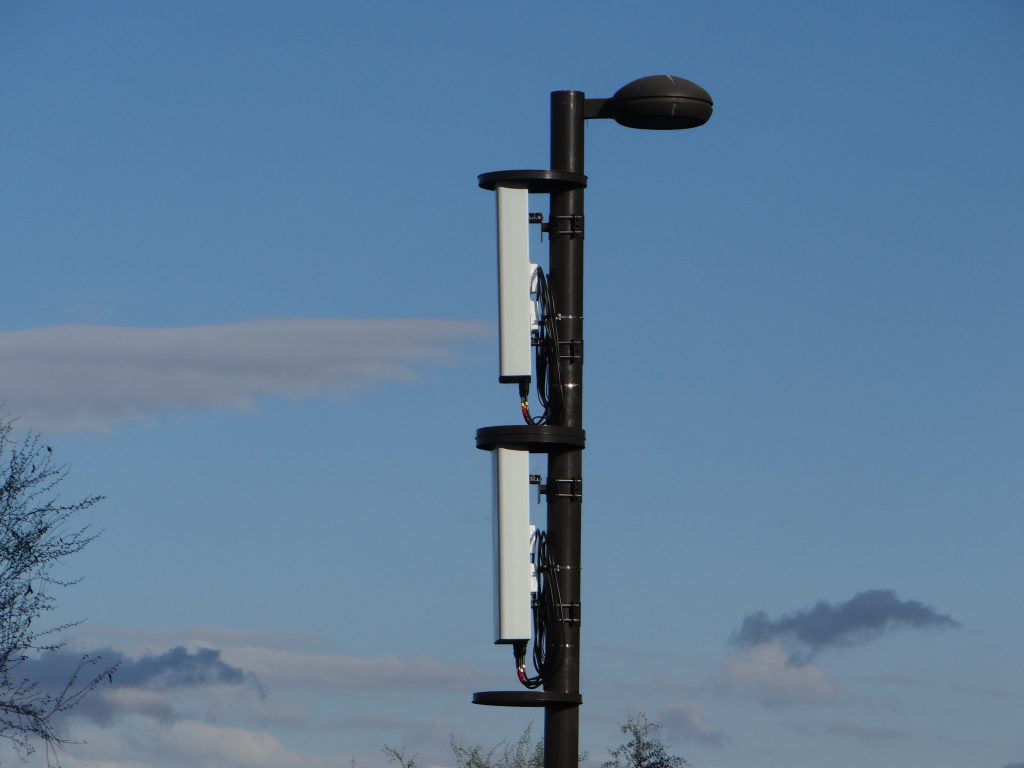The ongoing effort in Lavallette to oppose the deployment of wireless “nodes,” small antennas that will carry ultra high-speed data and compete with wired cable systems, will first come in the form of an ordinance that was introduced last week and will be the subject of a hearing and final passage next week. Meanwhile, other island towns, including Seaside Heights, are saying they will look into regulating the wireless antennas.
The municipalities face an uphill battle. The Federal Communications Commission has enacted a set of rules that greatly restrict local governments, and even state governments, from creating policies that overly regulate or prohibit the next-generation technology. But Lavallette, like a few towns in Cape May County, have originated their initial anti-5G efforts from a land use perspective. The ordinance regulates the siting of “poles, antennas and cabinets” in the public right-of-way.
Some Lavallette residents have strongly opposed the deployment of a 5G network, mainly citing health concerns and aesthetic detriments. A few residents have also questioned whether 5G antennas could lower property values. The FCC’s rule, which went into effect Jan. 14, prohibits municipalities from considering property value disputes. Proponents of 5G networking have supported the rule, arguing that allowing each individual town throughout the country to adopt their own rules would create a beaurocratic nightmare that would stunt the nation’s deployment of new technology.
As part of the FCC’s rule, local governments can still exercise some control. For example, towns and counties can clearly define the space that constitutes a public right of way, adopt size requirements for the nodes – also known as “small cells” – and set reasonable aesthetic guidelines, especially in “design” districts where structures must follow a thematic scheme.
Lavallette’s proposed ordinance bans new structures five feet between the paved street and the nearest property line, except curbs and sidewalks, gravel and similar landscaping. Wireless providers will need to obtain permits to place any equipment on utility poles, street lights or any other existing objects in the right of way and enter into an agreement with the borough. Furthermore, any new poles must not be more than 18-inches from the curbline nor taller than 35-feet (or 110 percent higher than neighboring utility poles). Agreements must last a minimum of 15 years and be approved by a vote of the borough council. There are also a slew of size requirements for both the antennas and networking switch boxes to which they would be connected.
Wireless providers would be required to pay a permit fee of $500 for one to five antennas and $100 for each addition antenna.
A copy of the entire ordinance is located below.
Seaside Heights officials have also taken notice of the impending 5G deployment. Borough Administrator Christopher Vaz said his main concern is co-location of equipment so multiple providers can work off a single system, avoiding the aesthetic issue that would come with a theoretically unlimited number of providers offering their services.
“The good news is that we have rights as a town, but we have to start looking at the zoning ordinances and regulations,” said Vaz.
“It’s new and there are things that I don’t think are fully fleshed out,” said Seaside Heights Borough Attorney Jean Cipriani. “There are a lot of lawsuits nationally – it’s not just New Jersey, not just Ocean County and not just the barrier island. One of the things we can certainly try is to require the boxes be on the ground.”
Lavallette’s next meeting, where the ordinance is set to be adopted, will be held Feb. 19. As with all ordinances in New Jersey, a public hearing is required before the council takes a second vote. The ordinance was introduced unanimously.

Advertisement

Seaside Heights & Seaside Park
Seaside Heights School Board Seeking More Participation, Will Change Meeting Times

Police, Fire & Courts
Seaside Park Man, 68, Charged in Fatal Crash With Pedestrian

Ortley Beach & North Beaches
Lottery Ticket Worth $10K Sold at Ortley Beach Acme

Ortley Beach & North Beaches
Abandoned Private Island ‘Mansion’ in Barnegat Bay Poised for Demolition









